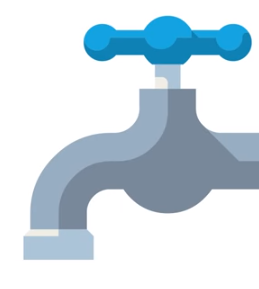EWG’s just-released Tap Water Database shows 250 different contaminants detected in nation’s drinking water in tests by local water utilities, among them 93 are linked to an increased risk of developing cancer.
EWG analyzed the tap water data for 48,000 water utilities nationwide for the years 2010 to 2015, and found that more than 80 percent of the utilities detected contaminants linked to cancer in levels exceeding health-protective guidelines.
EWG set out to find which tap water contaminants pose the greatest risks for children in America today. According to EWG’s Tap Water Database, drinking water supplies for millions of American children and adults have higher amounts of 90 contaminants than scientists consider safe, even if the water gets a passing grade from the federal government. This number doesn’t account for the exposures of the more than 40 million people who drink water from private wells, which are not routinely monitored for contaminants. Some drinking water contaminants are more harmful when exposure occurs during critical windows in a child’s development.
Overall, the data show:
- More than 250 detected contaminants – and the more we test the more we find;
- 93 chemicals linked to cancer;
- 78 chemicals linked to brain and nervous system problems;
- 63 contaminants that can harm development of the fetus or young child;
- 38 contaminants linked to human fertility problems; and
- At least 45 contaminants linked to hormone disruption.
You can check EWG’s database to find out if there are any toxic chemicals in your tap water.
Commonly seen contaminants are:
1. 1,4-Dioxane
2. Arsenic
3. Chromium-6 (about 250 million Americans are contaminated with chromium-6)
5. Nitrate
6. Atrazine (from harmful weedkiller, in tap water for millions in U.S.)
Other commonly found contaminants are Lead, Atrazine, Manganese, Fluoride.
Follow the links below for filters that remove:
For atrazine and lead: Even a simple countertop pitcher with a carbon filter can work.
For fluoride, manganese, and nitrate: Reverse osmosis is the most reliable system for removing these contaminants. Click here to see reverse osmosis filters.
EWG strongly recommends using a water filter at home: EWG’s Water Filter Buying Guide.
When you are on the go, EWG recommends:
- If possible, avoid buying bottled water – it’s often just filtered tap water, and is much more expensive than filtering your own water. Instead, use portable and affordable carbon filter pitchers that easy to pack for your journey.
- Another option is purchasing a portable filter water bottle – EWG’s list options in their water filter buying guide. Make sure the water bottle is BPA-free as well.

